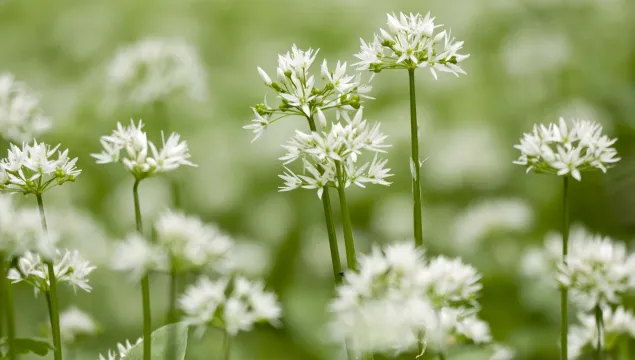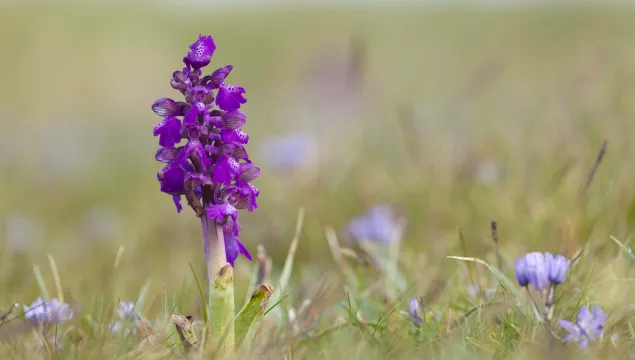Lily-of-the-valley
A beautifully scented plant, the arching stems and bell-shaped flowers of Lily-of-the-valley can be seen in many woodlands. Despite its delicate appearance, this plant is highly toxic.
A beautifully scented plant, the arching stems and bell-shaped flowers of Lily-of-the-valley can be seen in many woodlands. Despite its delicate appearance, this plant is highly toxic.
The nodding, pink-and-purple-chequered flowers of the snake's-head fritillary are said to resemble a snake, hence the name. Declining with the loss of our meadows, this delicate plant can be seen in spring.
In April and May, our ancient woodlands are awash with the much-loved, nodding heads of the bluebell. Millions of bulbs can exist in just one wood, giving rise to the 'blue carpets' that are a springtime joy.

In April and May, our ancient woodlands are awash with the white, starry flowers and smell of wild garlic. Millions of bulbs can exist in just one wood, giving rise to dazzling 'white carpets'.
Perhaps the first sign that spring is just around the corner is the snowdrop poking its way through the frosted soil of a woodland, churchyard or garden. From January, look for its famous nodding, white flowers.
Herb-Paris has four oval leaves set in a cross, with an understated crown of yellow-green flowers rising from the middle. This makes it quite a distinctive plant of ancient and damp woodlands on chalky soils.
The bright yellow daffodils that adorn our roadsides and parks are likely to be garden varieties. Head to a woodland or damp meadow in North or South West England, or Wales, to see a true wild daffodil.
The large, sunshine-yellow flowers of the yellow iris brighten up the margins of our waterways, ponds, wet woods, fens and marshes. Also called the 'flag iris', its outer petals have a characteristic 'droop'.
A climbing plant of hedgerows and woodlands, Black bryony produces greenish flowers in summer and red, shiny berries in autumn. It is a poisonous plant.
The Marsh helleborine is a beautiful orchid of fens, wet grassland and dune slacks. Growing in profusion in places, look for reddish stems and white-and-pink flowers.
A tall orchid of woodland and scrub, the broad-leaved helleborine has greenish, purple-tinged flowers that look a little 'drooping'. Strongly veined, oval leaves spiral around its stem.

A short, but pretty plant of unimproved grasslands, the Green-winged orchid gets its name from the green veins in the 'hood' of its flowers. Look for it in May and June.